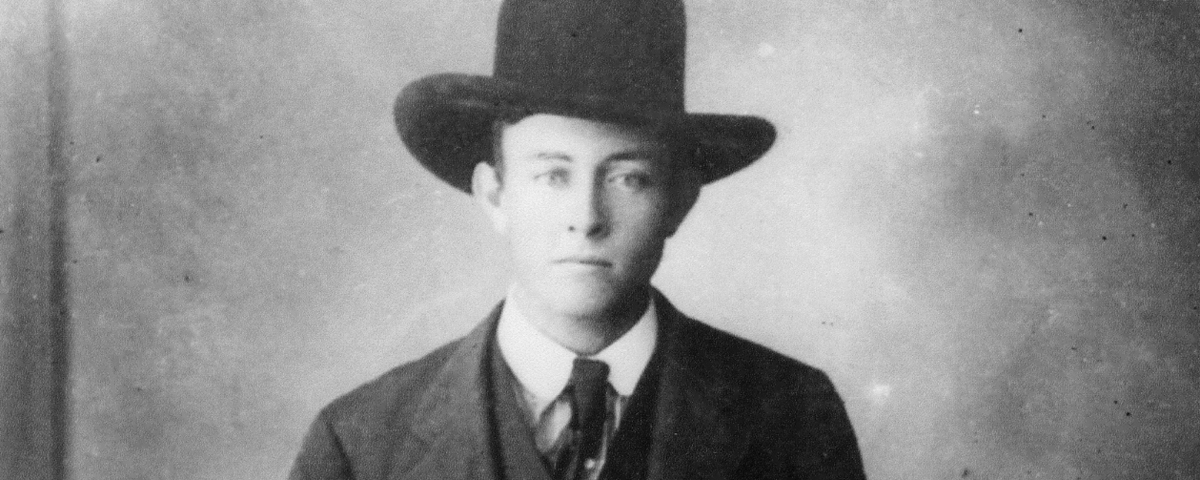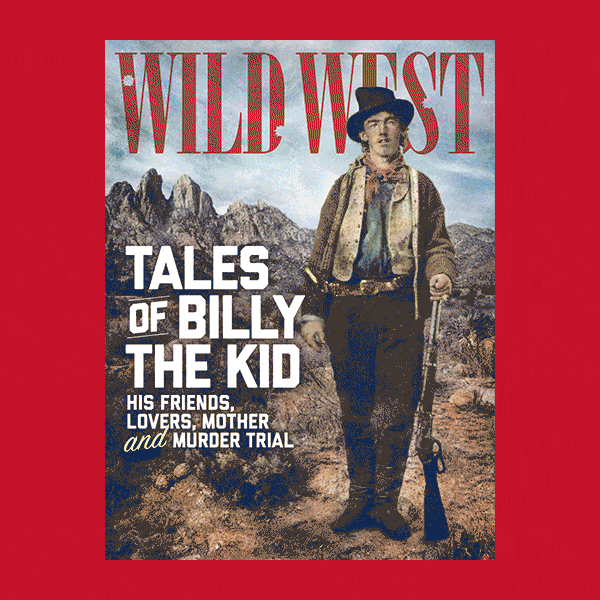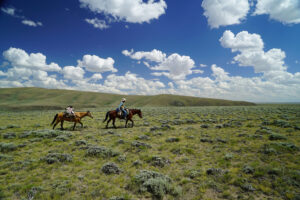The Wild West History Association presented John Boessenecker its 2017 Six-Shooter awards for both his biography of Texas Ranger Frank Hamer and the following article, which was the April 2016 Wild West cover story.
Frank Hamer is remembered mainly as the ex-Texas Ranger captain who hunted down murderous outlaws Bonnie Parker and Clyde Barrow in 1934. Yet he was a lawman before either criminal was born. Hamer joined the Rangers in 1906. Though only 22, he was more than prepared for the job. He had come of age in the Texas Hill Country, and while still a boy became an expert horseman, sharpshooter, hunter and tracker. When he was 16 an enemy fired a blast of buckshot into him that would have killed a grown man, but Hamer was tough as nails and survived. In April 1906 he was assigned to Ranger Company C, commanded by the legendary Captain John H. Rogers. In late October of that year Captain Rogers, with Hamer and Ranger R.M. “Duke” Hudson, traveled to Del Rio to help keep the peace in advance of a rowdy election.
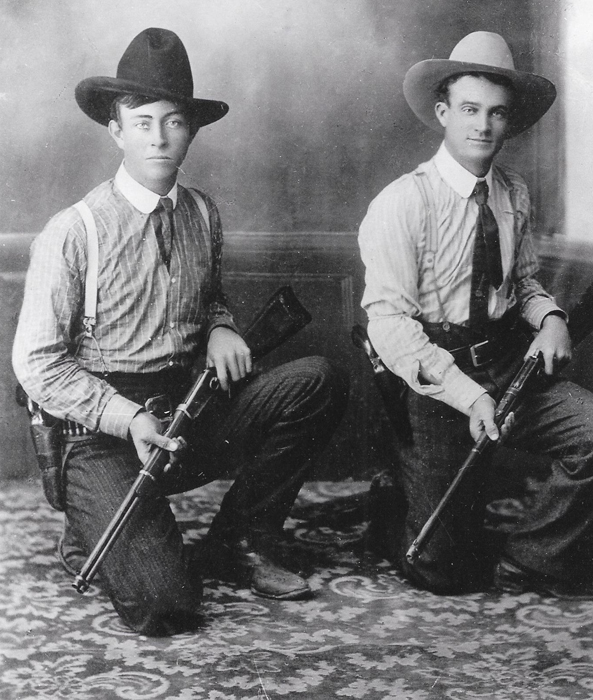
Del Rio was a dusty border town of 2,000 people, situated on the Rio Grande directly opposite its Mexican counterpart, Las Vacas (now Ciudad Acuña). Like all border communities it had a large Spanish-speaking population, mostly concentrated on the east side of town. In that era local officers from all points in Texas often called on the Rangers for help. In Del Rio, Hamer and Hudson initially acted, to all practical effect, as city police. They patrolled the town, guarded the polls and arrested several townsfolk for public drunkenness and possession of firearms. But their stay in Del Rio would prove anything but routine.
On November 18 a stranger appeared in Del Rio, calling himself A.R. Sibley and claiming to be a sheep buyer. His real name was Ed Putnam, and he was a 30-year-old ex-convict from Edwards County, northeast of Del Rio. For the previous seven years he had drifted back and forth between west Texas and New Mexico Territory, where he was suspected of smuggling. He had last been in Kerrville, Texas, where flashed around money and put down a deposit toward the purchase of a $20,000 ranch. It seems Putnam intended to raise the balance quickly, without working for it. On November 23 he visited the sheep ranch of John W. Ralston in Rocksprings, 75 miles northeast of Del Rio. The sheepman agreed to sell his herd to Putnam for $6,000. Putnam handed over a check for $1,000, and the two climbed into Putnam’s buggy so they could complete the deal at the First National Bank in Del Rio. But as they reached a spot 11 miles north of town, Putnam shot Ralston in the head. To avoid leaving a blood trail, he draped an oat sack around the sheepman’s head, then dumped his body in a roadside gully. Hopping back up into the buggy, Putnam soon arrived alone in Del Rio.
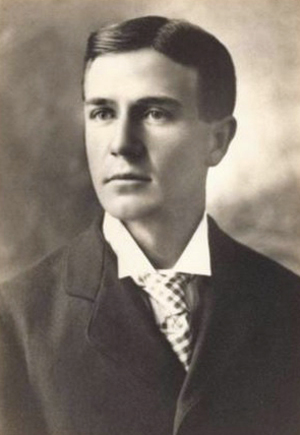
Meanwhile, Ralston’s sons drove the flock of sheep to a pasture known as the Four-Mile Tank, 7 miles outside of town, to await their father’s return. A few days later Putnam met a wealthy sheepman, Blake M. Cauthorn, who owned a ranch near Del Rio. Putnam offered to sell Cauthorn the large flock penned up north of town. Cauthorn was interested, so he and Putnam rode out to the Ralston boys’ camp to look over the sheep. Putnam informed the boys that he had paid their father in full, and that the elder Ralston had gone to Kerrville to buy horses. Putnam also told the Ralstons their father had instructed them to turn over the sheep and meet him at the family ranch in Rocksprings. Cauthorn was satisfied with the sheep, so he and Putnam returned to the bank in Del Rio, where the sheepman handed the killer a certified check for $4,500.
By that time the Ralston boys had grown suspicious. While one stayed with the flock, the other rode to Rocksprings, where he sent a telegram to Kerrville and learned their father was not there. He then raced back to the sheep camp. The next morning, November 30, Cauthorn rode out to the Four-Mile Tank to pick up the flock, telling his wife he would return by noon. There he met Ralston’s sons, who by then were alarmed over their father’s disappearance. They explained the situation and refused to turn over the sheep. Cauthorn was surprised and immediately started back to Del Rio to stop payment on the check and find Putnam. He never got there. About 4 miles from town he encountered Putnam in his livery rig. Putnam apparently told Cauthorn that Ralston’s sons were mistaken and convinced him to return to the pasture at Four-Mile Tank. As Cauthorn turned his buggy, Putnam fired once. The bullet passed through the rear of the buggy seat and struck Cauthorn in the lower back—a mortal wound. The sheepman’s team spooked at the gunfire and raced a half-mile off the road, finally breaking loose from the buggy. With no recourse, Putnam whipped up his team and fled north on the road toward Sonora, Texas.
By early afternoon Cauthorn’s wife became worried by her husband’s failure to return home. She telephoned her brothers, who in turn notified the Rangers. Captain Rogers investigated and soon learned of the mysterious disappearance of John Ralston after his business dealings with the stranger known as Sibley. Several citizens had seen the stranger late that morning in a livery rig, headed north at a rapid pace. It didn’t take the experienced captain long to connect the dots, and he promptly called in Val Verde County Sheriff John Robinson. Sheriff Robinson and Duke Hudson started in pursuit of Ed Putnam. They hadn’t gone far when they met a rider on the way into town, who had seen Putnam’s livery rig abandoned 12 miles north of Del Rio. Robinson headed to a nearby ranch house he knew had a telephone and notified Rogers to bring the sheriff’s bloodhounds and a small posse to the scene of the abandoned buggy. “I took Private Hamer and a citizen,” Rogers later recalled, “and proceeded to the designated point of meeting, met Sheriff Robinson and Hudson there, and we spent the night circling and trying to find a trail that the dogs could take up and follow but failed.”
That evening Ralston’s sons had started for Del Rio in search of their father when they spotted Cauthorn’s buggy and found his corpse slumped in the seat. They raced into town to report their discovery. At daybreak on December 1 a rider from Del Rio brought word of the murder to Captain Rogers and Sheriff Robinson. The news whipped townsfolk into a fever pitch of excitement, and rumors flew that Mexican bandits or revolutionaries had robbed and murdered Ralston and Cauthorn. Rogers and the sheriff immediately started for town, leaving Hamer and Hudson with the bloodhounds and a small posse to continue the hunt for Putnam. The fugitive was on foot, and Hamer knew it would be no easy task to find him. As Rogers explained, the terrain was “very rough and jagged and containing many caves that would furnish convenient hiding places for a criminal.”
Hamer quickly drew a bead on the six-gun barrel and squeezed his trigger
While Hamer and Hudson resumed the manhunt, Captain Rogers and Sheriff Robinson went to the scene of Cauthorn’s murder, examined the body and the buggy tracks, and then returned to Del Rio. They suspected the killer might have circled back to town to board a train. While Rogers watched all westbound trains, Sheriff Robinson assigned several men to keep an eye on the eastbound coaches. “I advised Sheriff Robinson to remain in Del Rio,” Rogers recalled, “attend to all telegraphing, receive all information and, in short, to command the situation, as [a] system is always necessary in handling any situation, especially where such excitement exists among the citizens.”
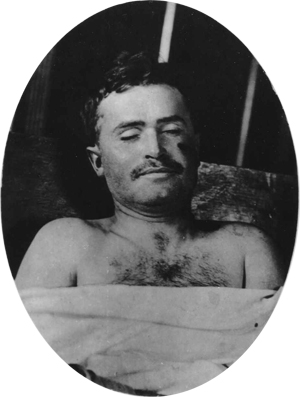
As a westbound freight train pulled out of Del Rio, Captain Rogers swung aboard with three volunteer possemen. They rode the rails for 30 miles, but as no one tried to board, they got off at Comstock and returned to Del Rio on a passenger train. Rogers found Sheriff Robinson waiting for him at the depot. The sheriff said that he’d learned Sibley’s true name was Ed Putnam, and that he believed the fugitive was holed up in a brothel owned by Glass Sharp, situated just north of the railroad tracks on the outskirts of town. The two raised a posse and were soon joined by Rangers Hamer and Hudson, who had just returned to Del Rio. The men crowded into two hacks and drove directly to the Sharp house, arriving at 6 p.m.
Sheriff Robinson stationed seven men in the front of the Sharp brothel, while Captain Rogers, Hamer, Hudson and another posseman covered the rear. In a loud voice, Robinson then ordered all the women in the house to come out, telling them he knew Putnam was inside. “At first one of the women denied that he was there,” Rogers recalled. “Afterwards they admitted that he was inside, and they carried him word from Sheriff Robinson to come out and surrender.” Sharp’s daughter, Georgia, was allowed to re-enter the house and speak with Putnam. “He won’t come out,” the girl told the officers. “He’s got a funny look in his eyes and says he won’t give up.”
Thirty minutes passed, and Sheriff Robinson lost patience. By this time a crowd of more than 100 townsfolk had gathered, some of them bearing firearms. Robinson then ordered the possemen to open fire on the house. Hamer, armed with a Winchester Model 1894 saddle ring carbine, had taken up a position behind a hackberry tree that gave him a good view of the back windows. The possemen opened up, pumping 30 or 40 rounds through the wood walls. Frank held his fire and patiently watched the rear windows. Several times he saw a curtain move, then he spotted the barrel of a revolver protruding from behind the curtain. Hamer quickly drew a bead on the six-gun barrel and squeezed his trigger. The heavy Winchester slug caught the crouching fugitive just under the left eye, ripped downward to shatter his jaw and sever his jugular vein, then passed out of his neck and into his left shoulder, exiting through his left arm. Ed Putnam dropped to the floor and in seconds was dead.
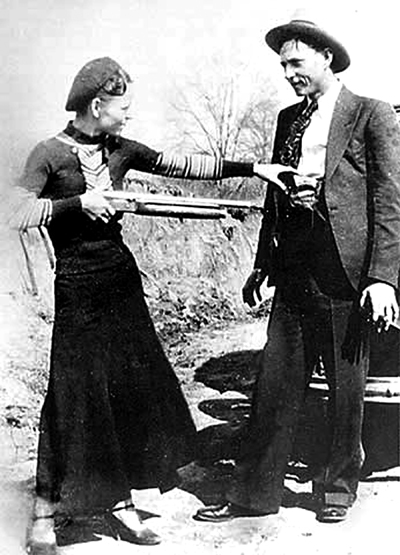
The lawmen heard a thud, as if Putnam had fallen. “However, not knowing whether he was dead, wounded or feigning to be dead,” Rogers explained, “the house was not entered for a time, and our party reloaded and fired many times after this until perhaps something like 200 rounds had been fired, when the house was entered and Putnam found to be dead, having received one fatal shot.” Putnam’s hand still clutched a loaded six-shooter. Captain Rogers recovered three guns—a .32-caliber Colt Single Action Army revolver, a .32-caliber Winchester rifle and a newfangled German Luger automatic pistol. In Putnam’s pockets the lawmen found 300 cartridges and $3,500 in cash. The house was completely riddled; one newspaper reported that 500 shots had struck it. “The furniture in the Sharp home was completely wrecked,” one eyewitness reported, “even the stove legs being shot off.”
John Ralston’s sons viewed Putnam’s corpse and identified him as the man who had “bought” their father’s sheep. The next day a searcher found Ralston’s body—mutilated by scavenging animals and decomposing—where Putnam had dumped it. Del Rio photographer Noah H. Rose had watched the fatal gunfight. He took a postmortem image of Putnam and invited Captain Rogers and his men to pose in his studio for commemorative portraits. Rose took four images of the Rangers. Two were group shots, with Captain Rogers seated, holding Putnam’s Luger pistol. Beside him were Frank Hamer, Duke Hudson and an unidentified man, their rifles in prominent display. Then Rose had Hamer and Hudson shed their coats, exposing their gun belts and six-guns, and photographed them kneeling and standing, rifles in hand. The images Rose took that day have become iconic in Texas Ranger lore.
Captain Rogers presented Putnam’s Colt .32 revolver to Hamer, explaining that on the occasion of his “first gunfight as a Ranger, he thought he should have a memento of the occasion.” The captain had been hugely impressed with Hamer’s coolness under fire and deadly marksmanship and thereafter viewed the recruit as one of his most trusted and reliable men. Hamer in turn idolized Captain Rogers and ever after sought to emulate his qualities of courage and fairness.
Hamer served four more decades in law enforcement, as city marshal of the rowdy east Texas town of Navasota, a special officer in Houston, deputy sheriff in Kimble County, mounted inspector for the Cattle Raisers Association of Texas, U.S. prohibition officer, Texas Ranger captain and private detective. He fought horseback outlaws, Mexican smugglers, the Ku Klux Klan, corrupt politicians, the Texas Bankers Association and even Lyndon B. Johnson. He engaged in 52 gunfights with desperadoes and saved 15 black men from lynch mobs. His 1934 pursuit and ambush of Bonnie and Clyde actually stands as one of the less significant exploits of his storied career. Frank Hamer was arguably the greatest American lawman of the 20th century.
Bonnie and Clyde in Myth and Popular Culture
IN MYTH, FILM AND POPULAR LITERATURE Bonnie Parker and Clyde Barrow were forlorn lovers driven by Depression-era hardship into a life of crime and were innocent of many of the murders charged against them. Bonnie, so the myth goes, never fired a gun and was never charged with murder. Nothing could be further from the truth. Clyde indeed grew up poor, as did Frank Hamer and tens of thousands of other Texans who never turned to crime. Clyde came from a family of criminals: Of the seven Barrow children, five became convicted felons. He started as a chicken thief at age 13 in 1922, seven years before the Depression even hit Texas. He slowly graduated to more serious crimes until convicted of burglary and auto theft in 1930 and sentenced to a term at the state penitentiary in Huntsville. Claims that Clyde was raped in prison, thus turning him to a life of crime, are false on both counts. Bonnie Parker worked as a waitress and part-time prostitute until she met Clyde, and the two became almost inseparable. Clyde and friend Ray Hamilton began a bloody crime spree in 1932 and were later joined by Bonnie. Barrow and Hamilton pulled a string of petty holdups, murdered a Texas shopkeeper and shot to death a deputy sheriff in Oklahoma. During a penny-ante stickup in Sherman, Texas, Clyde killed another shopkeeper—despite claims to the contrary by Barrow apologists. Clyde was ruthless and killed wantonly when in danger of being captured. While Clyde was stealing a car in Temple, Texas, the owner jumped onto the running board. Barrow shot him dead. When a deputy sheriff tried to arrest Clyde in West Dallas, Barrow killed him with a shotgun. Bonnie was just as deadly. When lawmen tried to capture the gang in Joplin, Mo., she fired on the officers. After the band tried to rob a bank in Lucerne, Ind., Bonnie unleashed a fusillade of rifle shots at unarmed citizens. At Dexter, Iowa, when a large posse encircled the gang, Bonnie repeatedly fired automatic pistols at officers before escaping. On Easter Sunday 1934 Bonnie and Clyde committed their most brutal murders. Two young Texas highway patrolmen spotted their parked car and, thinking they were stranded motorists, stopped to help. Bonnie and Clyde gunned them down in cold blood. They were indicted in absentia for the double murder. The Barrow family blamed the killings on gang member Henry Methvin, but the recently discovered FBI file on Bonnie and Clyde puts the lie to such claims. In February 1934 Texas Governor Miriam A. “Ma” Ferguson appointed Frank Hamer to track down the outlaw duo. Over the years he had seamlessly transitioned from horseback lawman to motorized gangbuster. Working closely with the FBI and the Dallas sheriff’s office, he methodically tracked the gang that spring. When he learned the gang had a hideout at the Methvin family’s Louisiana farm, he made a deal with Methvin’s father. The result was one of the most famous incidents in the history of American crime. On May 23, 1934, Hamer and his posse shot Bonnie and Clyde to death in a well-planned ambush on an isolated road near Sailes, La. Riddled with bullet holes, their Ford V8 “death car” is on display in the lobby of Whiskey Pete’s Hotel & Casino [primmvalleyresorts.com] in Primm, Nev. —J.B.

